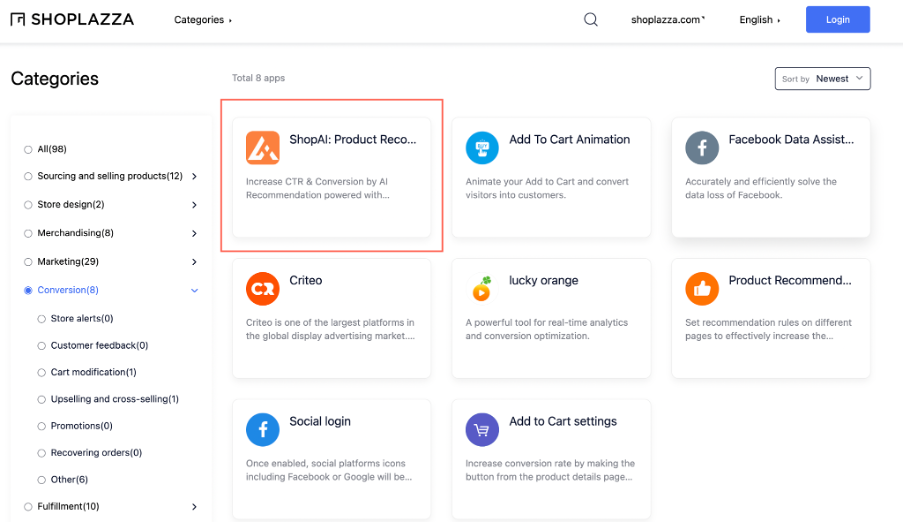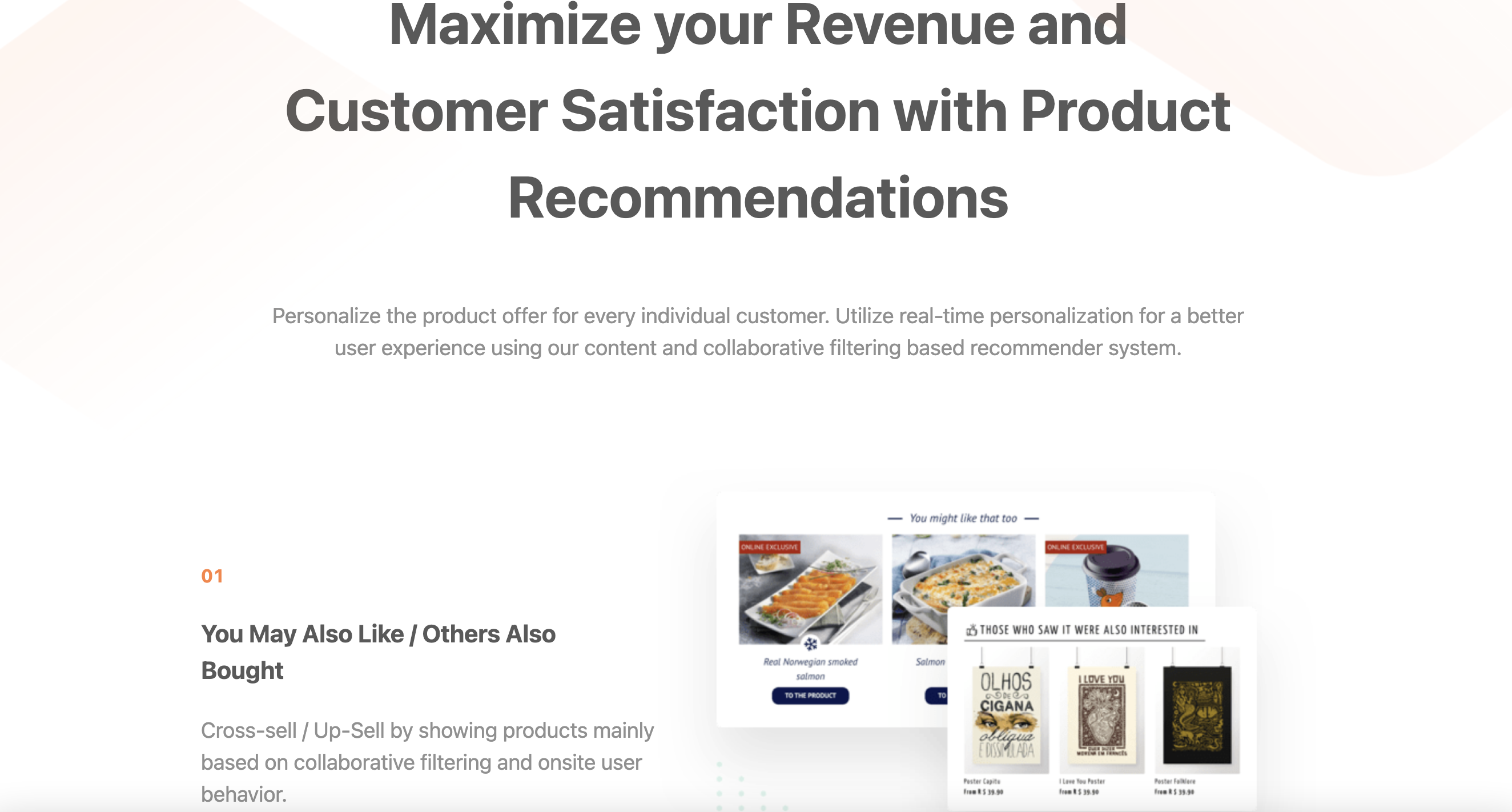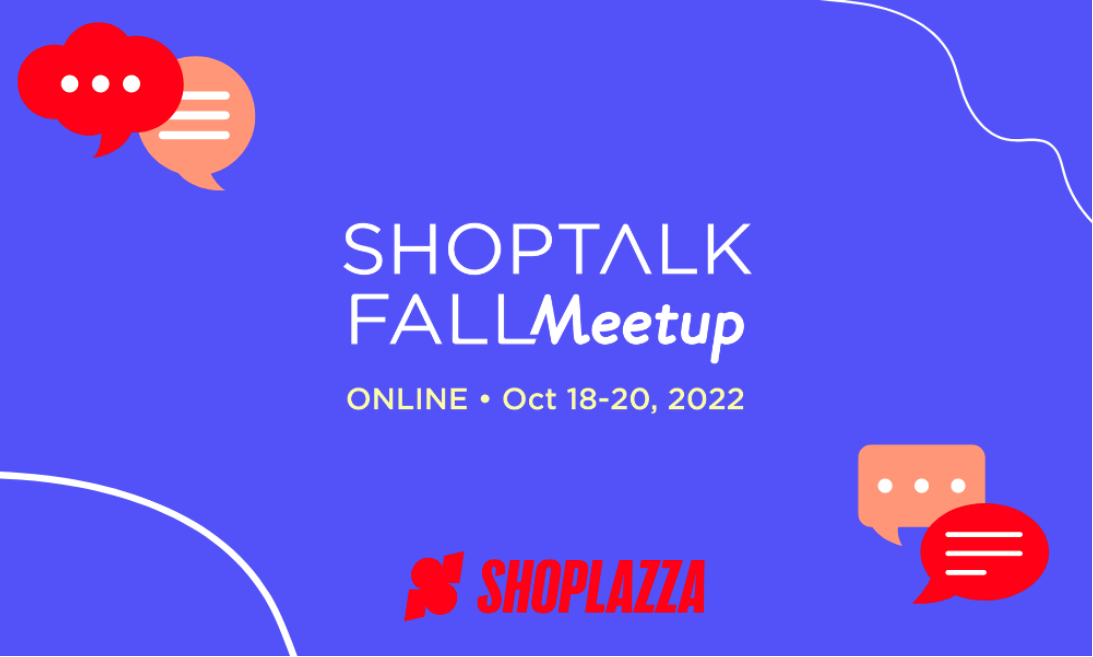Table of Content
- Intro
- What is artificial intelligence
- Machine learning and deep learning
- Business use case for artificial intelligence
- AI-based product recommendation
- How does AI recommendation improve conversion rate
- Shoplazza announce partnership with Shopflex
- ShopAI and its key features
- User guide
People's purchasing habits have changed as a result of online shopping. Consumers are more likely to shop with a clear objective in mind and select relevant things in order to complete the transaction quickly. Facing this new consumer behavior, the AI-based recommendation system is revolutionizing the shopping experience. With the continual improvement of intelligent machine learning capacities, artificial Intelligence (AI) has been widely employed in all walks of life. Particularly, the integration of e-commerce with AI has become a reality. The application of AI in the field of e-commerce can help merchants better understand customer demands on the one hand and provide consumers with a tailored shopping experience to meet those needs on the other.
In this post, we will discuss what artificial intelligence is and how product recommendations work. A step-by-step user guide is also presented to illustrate how Shoplazza and Shopflex help merchants personalize customers’ shopping experience.
Artificial intelligence
What is artificial intelligence
There have been a number of definitions of artificial intelligence (AI) over the last few decades. John McCarthy, father of AI, proposes the following definition in this 2004 paper, "It is the science and engineering of making intelligent machines, especially intelligent computer programs. It is related to the similar task of using computers to understand human intelligence, but AI does not have to confine itself to methods that are biologically observable." Artificial intelligence, in its most basic form, is a subject that combines computer science with large datasets to solve problems. It also includes the sub-fields of machine learning and deep learning, both of which are usually referenced when discussing artificial intelligence.
Machine learning and deep learning
As previously mentioned, both deep learning and machine learning are artificial intelligence subfields, with deep learning being a sub-field of machine learning. Because machine learning and deep learning are often used interchangeably, it's important to understand the differences.
Machine Learning
The idea of machine learning is to develop algorithms that allow digital computers to identify discriminate patterns (e.g., the pattern of pixels in an image, the pattern of terms in a tweet) without requiring programmers to code an explicit procedure, but instead letting the machine learn the patterns from the data itself. Machine learning algorithms perform best in scenarios where there are millions of reliably labeled data. Alternatively, as in deep learning algorithms that can play games, it is necessary that the “game” has clear rules and that it is possible to run millions of simulations or training experiments. Despite high-profile research examples, there are relatively few real-world scenarios where these conditions are met in business life.
Deep Learning
Deep learning is a type of machine learning that uses neural networks to simulate the brain's functions. Deep learning models attempt to directly parameterize a discriminant hierarchical structure of features from input data. The goal is to make determining the traits required for effective discrimination easier. The current success and broad use of deep learning algorithms is due to the availability of immense computational capacity provided by programmable graphics processing units (GPUs), along with the unparalleled quantity of training data. Deep learning algorithms are the building blocks of autonomous driving algorithms.
Keep in mind that machine learning algorithms work best when there are millions of accurately labeled data points. Alternatively, for deep learning algorithms to operate properly, the "game" must have clear rules and the ability to execute millions of simulations or training sessions. Despite high-profile academic examples, there are relatively few real-world circumstances in business when these prerequisites are satisfied. So we are still in the stage of “Week AI”.
Business use case for artificial intelligence
IBM Artificial Intelligence report listed five most common examples of real-world applications of AI systems.
- Automatic speech recognition (ASR): a capacity that converts human voice into written text using natural language processing. Many mobile devices include speech recognition into their systems to do voice searches (e.g., Siri) or to improve texting accessibility.
- Recommendation engines: using historical consumption behavior data, AI algorithms can help to discover data trends that can be used to develop more effective cross-selling strategies. This is used by online retailers to make relevant add-on recommendations to customers during the checkout process.
- Customer service: online virtual agents are replacing human agents along the customer journey. Examples include messaging bots on e-commerce sites with virtual agents, messaging apps, such as Slack and Facebook Messenger, and tasks usually done by virtual assistants and voice assistants.
- Automated stock trading: AI-driven high-frequency trading platforms, which are designed to optimize stock portfolios, make hundreds or even millions of deals every day without the need for human participation.
- Computer vision: this AI technique allows computers and systems to extract useful information from digital photos, videos, and other visual inputs, and to act on that information. It has uses in social media photo tagging, healthcare radiological imaging, and self-driving automobiles in the automotive sector.
How does AI recommendation improve conversion rate
The recommendation engine is considered by some people as an outdated generation AI system due to a lack of dizzying effects like image recognition or language generation. Nevertheless, recommendation is one of the most used AI systems which have the most extensive implementation in almost all online services and platforms. For instance, Amazon, Netflix, and YouTube have all implemented their own version of recommendations to suit their customer needs. According to the research paper published by Gomez-Uribe and Netflix’s chief of product Neil Hunt, the combined effect of personalization and recommendations saves Netflix more than $1 billion per year. Furthermore, 80% of the subscribers are choosing videos from the engine’s recommendation list.
Recommender systems are a better option than search algorithms. They assist consumers in discovering stuff they would not have discovered otherwise and provide customized products based on their preferences. As a result, every major platform will require a recommendation system algorithm to enhance the user's buying experience by automating the search process, providing tailored goods, and saving time.
Shoplazza announce partnership with Shopflex
Shoplazza empowers independent brands to globalize
Founded in 2017, Shoplazza has been sticking to its mission of “driving global business success for clients through cutting edge technology" by providing integrated DTC online store SaaS solutions with the best-in-class shopping experiences for customers worldwide. We provide merchants with:
- Wide range of themes and templates for store building
- Automate inventory management
- Multi-channel marketing
- high-conversion marketing plug-ins
- Smooth and secure payment settlement
- Professional operation data analysis reports
- Enterprise-level solutions for consumer loyalty management and other functions
At the same time, Shoplazza continues to construct a business ecosystem by integrating our developers and vendors in marketing, payment, transportation, warehousing, supply chain, and e-commerce ERP.
On April 8, Shoplazza announced a partnership with ShopFlex. We, together, will provide merchants with smart shopping recommendation functions through the App ShopAI.
ShopAI and its key feature
Shopflex introduction
Shopflex is a company focuses on providing marketing and intelligent solutions for global e-commerce. The main solutions include: zero-code construction of B2B and Dropshipping platform, seamless integration with Shoplazza, one-click product import and inventory order synchronization, and intelligent marketing solutions such as shopping recommendation algorithms.
How ShopAI works?
Using artificial intelligence and machine learning algorithms, ShopAI provides merchants with essential functionalities such as Recommended for You, Frequently Bought Together, and Others You May Like based on customer behavior, product classification, as well as real-time pricing and marketing strategies to enhance consumers’ personalized shopping experience and increase store conversion rates.
Core recommendation features include:
- Recommended for You: Predicts the next item a user is most likely to click or buy based on the user's shopping history, browsing history, and requested contextual information. The optimization target for this recommendation is CTR.
- Frequently Bought Together: Predicts items that are frequently purchased with a specific item in the same shopping session. Usually displayed on the shopping cart page, the goal is the conversion rate, which can directly increase the average order revenue.
- You May Also Like: Based on the user's shopping and browsing records, and the degree of correlation between the candidate product and the currently specified product, predict the next product that the user is most likely to click and purchase.
- Similar Items: Maximize the use of product name, description, category, picture and other metadata to find products similar to candidate products. This recommendation is usually used on the details page to help improve the conversion rate.
With ShopAI, merchants can build high-quality personalized product recommendations for their stores without any expertise such as big data and machine learning. Merchants can also customize the recommended content and goals according to store characteristics and user habits. According to Shopflex statistics, retailers that used the ShopAI recommendation algorithm saw a 50 percent boost in click-through rate (CTR) and a 30 percent increase in revenues.
User guide
ShopAI has now been officially published on the Shoplazza platform's APP Store. To use ShopAI's smart shopping recommendation service, platform merchants just need to connect and install the App.
- Install Now
Shoplazza App Store - Conversion - ShopAI

- Get started
Three steps to set up your recommendations:
Step1: Create a placement based on the recommendation type.


Step2: Add the recommendation gallery to you shop though theme editor.

Step3: Wait for the recommendation engine processing.
Conclusion
The main goal of any store is to sell more goods, sell them faster and at a higher price, bringing profit to the owner. Shopflex, powered by AI recommendation, is designed to assist merchants personalize shopping experience for their customers and enhance conversion rate.
In the future, Shoplazza will continue to follow the “Open to More” idea and open the platform system, allowing more developers to provide customers with diversified services via the Shoplazza platform, thereby increasing profits synergistically and achieving a win-win situation for all parties.



